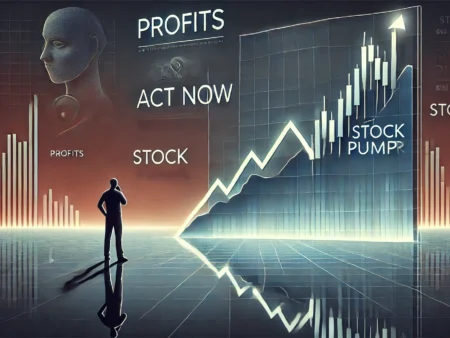The rise of online trading has opened up new opportunities for millions of people to invest and grow their wealth. However, it has also provided a breeding ground for scam brokers, preying on unsuspecting individuals with promises of high returns and low risk. Avoiding these scams is essential for any trader, whether you’re new to the market or an experienced investor. This article will highlight the red flags of scam brokers and provide a practical checklist to help you identify legitimate platforms.
What Are Scam Brokers?
Scam brokers are fraudulent online trading platforms that manipulate or deceive traders to steal their money. They may pose as legitimate brokers, offering attractive bonuses or guaranteed profits, but once you deposit your money, it becomes nearly impossible to withdraw funds or realize any promised gains. These scams often involve forex, cryptocurrencies, and CFD trading, where online platforms claim to offer you access to lucrative markets.
Common Tactics Used by Scam Brokers
Scammers use a variety of tactics to lure victims. Some of the most common include:
- Unsolicited Calls or Emails: Scam brokers often reach out through unsolicited phone calls or emails, offering too-good-to-be-true investment opportunities.
- Guaranteed Profits: Promises of guaranteed profits are a hallmark of scam brokers. No legitimate broker can guarantee returns in the volatile world of trading.
- High-Pressure Tactics: Fraudsters will often use high-pressure sales tactics, urging you to invest quickly without giving you time to research the platform.
- Fake Endorsements: Scammers may falsely claim that they are endorsed by well-known individuals or financial organizations, adding legitimacy to their claims.
- Withdrawal Issues: Once you’ve deposited funds, scam brokers may make it exceedingly difficult to withdraw your money, citing various excuses or hidden fees.
Key Red Flags of Scam Brokers
To protect yourself, it’s crucial to know the red flags that could indicate a broker is a scam. Here are some common warning signs:
- Unregulated or Poorly Regulated Broker: Legitimate brokers are regulated by recognized financial authorities. Scam brokers often operate without regulation or under weak regulatory bodies.
- Excessive Fees and Hidden Charges: Scam brokers often impose hidden fees, especially when you attempt to withdraw your funds.
- Promises of Unrealistic Returns: If a broker is promising you consistent, high returns with little to no risk, it’s likely too good to be true.
- No Clear Terms and Conditions: Legitimate brokers have clear, accessible terms and conditions. If these are vague or hard to find, it’s a red flag.
- Fake Reviews and Testimonials: Scam brokers often pay for fake reviews or use fabricated testimonials. Look for credible, independent reviews from trusted sources.
A Checklist to Identify a Legitimate Broker
Here’s a useful checklist to help you identify a trustworthy broker and avoid scams:
1. Verify the Broker’s Regulation
- Check the Regulatory Body: Legitimate brokers are regulated by well-known financial authorities like the Financial Conduct Authority (FCA) in the UK, the Securities and Exchange Commission (SEC) in the U.S., or the Cyprus Securities and Exchange Commission (CySEC). Ensure the broker is registered with a reputable authority.
- Cross-Check Registration: Visit the official website of the regulatory body to verify if the broker is listed and has a valid license.
2. Look for Transparent Fees
- Review Fee Structure: Legitimate brokers provide a clear outline of their fees, including spreads, commissions, and any other charges. Avoid brokers that are vague about fees or impose hidden charges.
- Test Withdrawals: Before committing large sums, try withdrawing a small amount. Scam brokers often complicate or block withdrawals, whereas legitimate platforms process them smoothly.
3. Check for Secure Payment Options
- Secure Payment Methods: Reputable brokers offer secure payment options such as bank transfers, credit cards, or well-known e-wallets like PayPal or Skrill. Avoid brokers that push for payment through less secure methods like cryptocurrencies (unless you fully understand the risks) or obscure payment systems.
4. Ensure Platform Reliability
- Test the Platform: Legitimate brokers offer stable, user-friendly platforms. You can test this by opening a demo account to see if the platform performs well. Scam brokers often have buggy platforms or make trades difficult to execute.
- Reputation and Reviews: Check independent review sites and forums for feedback on the broker. Be cautious if the broker has only glowing reviews or if you find multiple complaints about withdrawals and poor customer service.
5. Customer Support
- 24/7 Support: A legitimate broker should offer responsive customer support, including multiple channels like phone, email, and live chat. Test the response times and quality of answers before depositing money.
- Physical Address: Ensure the broker has a verifiable business address. Scam brokers often operate from unknown or untraceable locations.
6. Research the Company’s History
- How Long Have They Been in Business?: Established brokers with a long history are generally more reliable. Scam brokers tend to be newer and disappear quickly once they’ve scammed enough users.
- Ownership Information: Legitimate brokers are transparent about their leadership and ownership. Scam brokers often provide little information about who runs the company.
7. Avoid Brokers with Unrealistic Offers
- Beware of Bonus Schemes: Some scam brokers lure traders in with large deposit bonuses, but these often come with strict conditions that make withdrawals nearly impossible.
- Guaranteed Returns: Any broker promising guaranteed profits is almost certainly a scam. No trading is risk-free, and market conditions are always subject to change.
Conclusion: Stay Vigilant and Do Your Research
Avoiding scam trading brokers online requires vigilance, thorough research, and attention to detail. Always take time to investigate a broker before committing any funds, and never be swayed by high-pressure sales tactics or promises of fast, guaranteed profits. A legitimate broker will be transparent, regulated, and professional in its dealings with customers.
By following this checklist and keeping an eye out for red flags, you can trade with confidence, knowing that your funds are in safe hands with a legitimate and reputable broker.
Scam brokers are becoming more sophisticated, but with the right knowledge and tools, you can avoid falling into their traps. Always trust your instincts, and when in doubt, consult financial professionals before investing.













